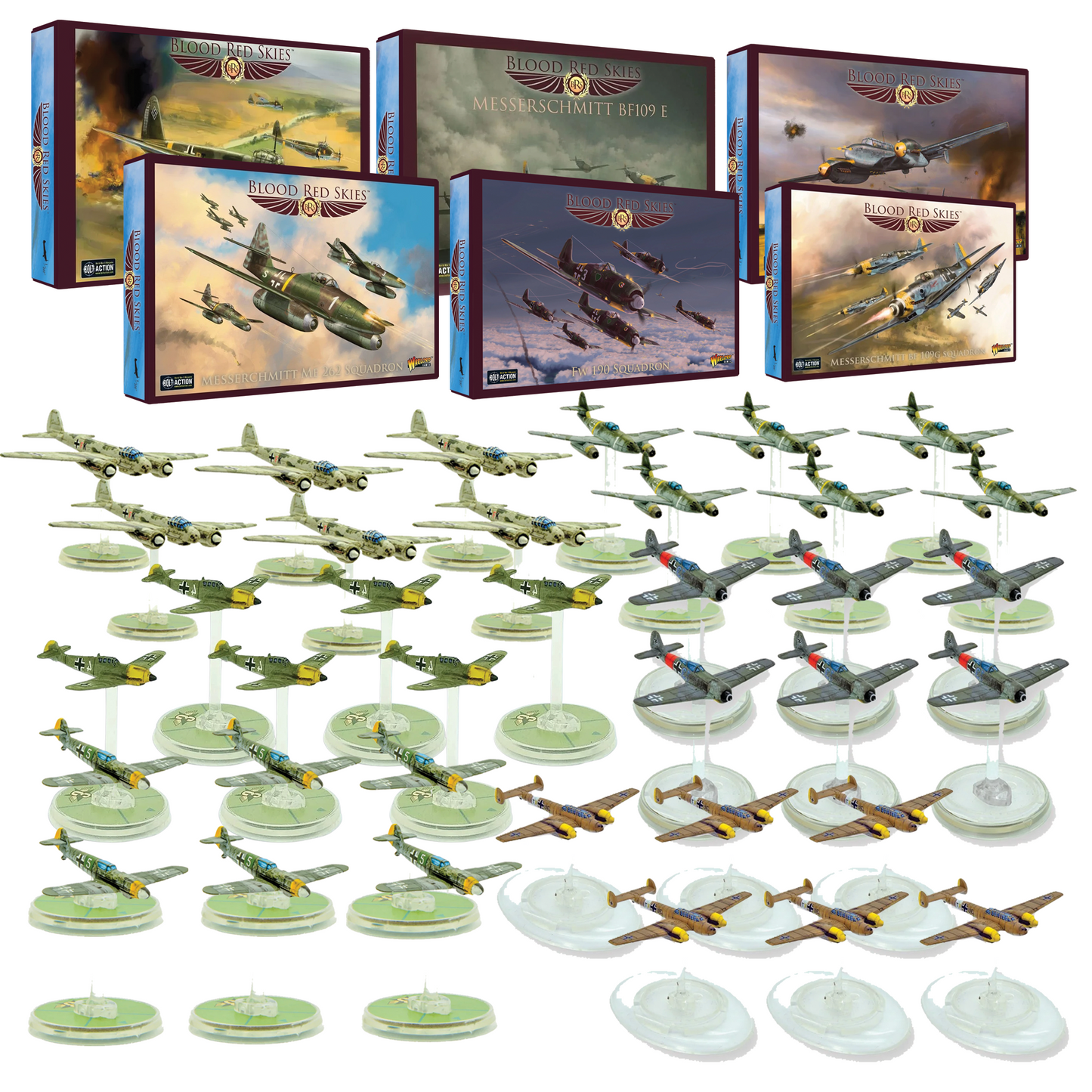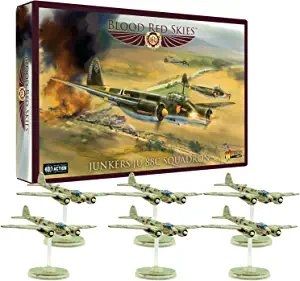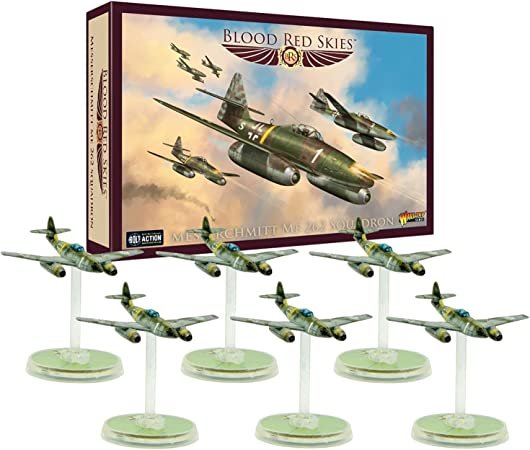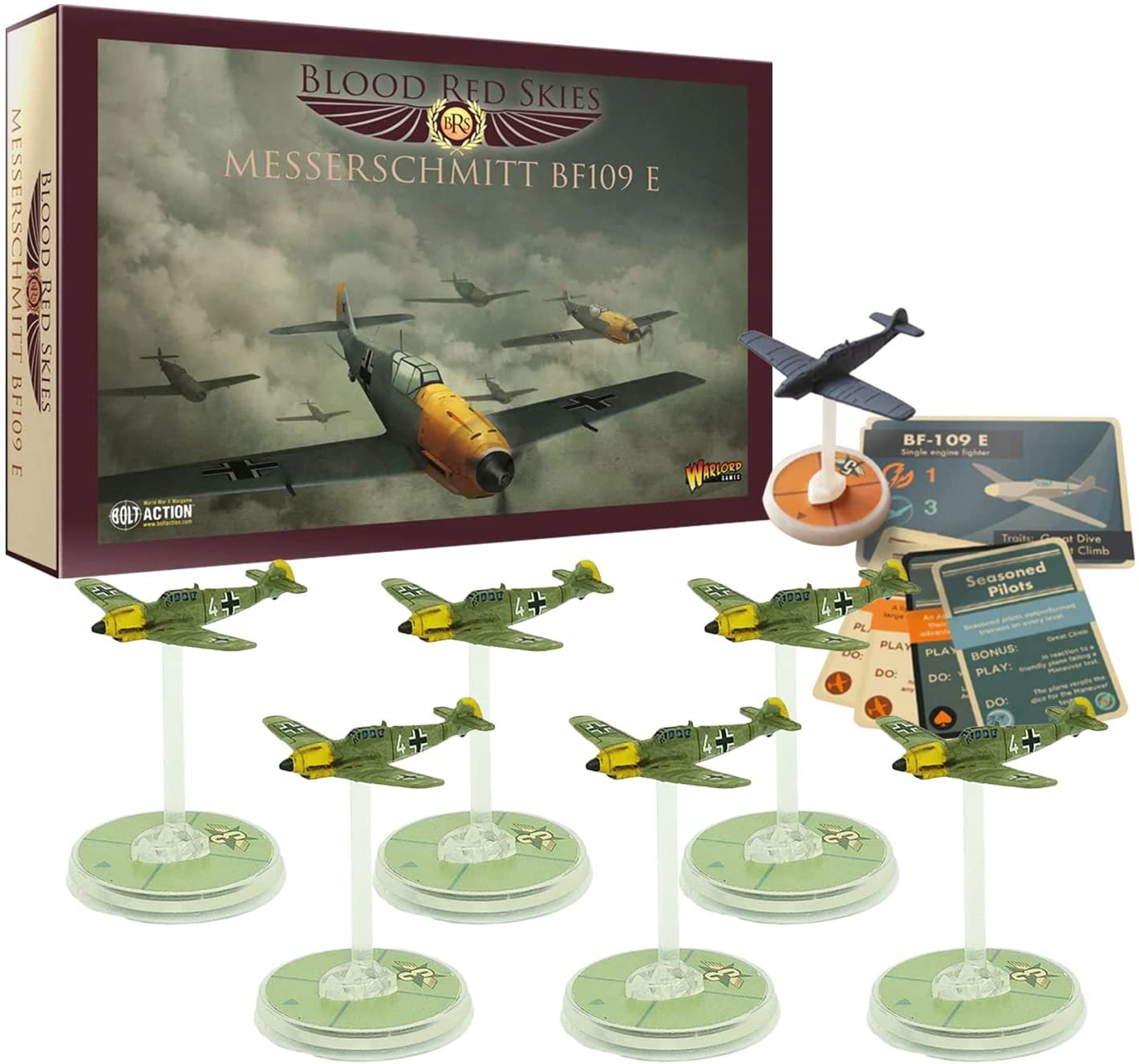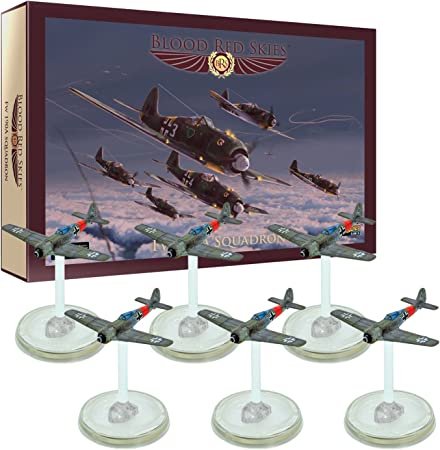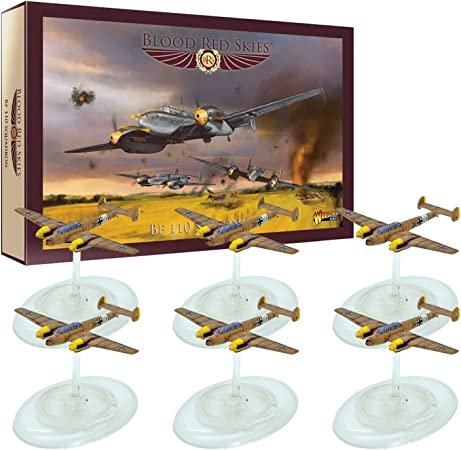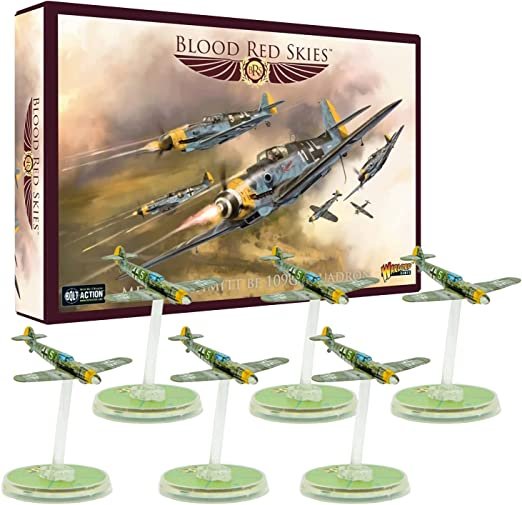Warlord Games
Blood Red Skies - Luftwaffe Bundle
Couldn't load pickup availability

- Blood Red Skies - Luftwaffe: Junkers JU-88C Squadron
- Blood Red Skies - Luftwaffe: Messerschmitt ME-262 Squadron
- Blood Red Skies - Luftwaffe: BF-109 E Squadron
- Blood Red Skies - Luftwaffe: Fw 190 Squadron
- Blood Red Skies - Luftwaffe: Bf 110 Squadron
- Blood Red Skies - Luftwaffe: Messerschmitt Bf 109G Squadron
- The Ju 88C was one of the most successful heavy fighters used by the Luftwaffe. It was a conversion of the Ju 88 bomber with its usual glasshouse nose replaced by a solid fairing mounting a formidable battery of machine guns and cannon. The Ju 88C worked in multiple roles throughout the war including ground attack as a fighter-bomber, bomber-destroyer, intruder, maritime long range escort and strike aircraft.
Contents:
- 6 x Warlord Resin Junkers Ju JU88C aircraft
- 6 x Advantage flying bases
- 1 x Punchboard with double-sided Pilot Skill discs
- 1 x Double-sided Pilot disc set
- 1 x Aircraft Card (JU 88C)
- 1 x Doctrine Card (Opening Shot)
- 6 x Aircraft Trait Cards (Heavy Hitter)
- 1 x Waterslide aircraft markings sheet
- The Messerschmitt Me 262 was the first operational jet-powered fighter aircraft in the world. Though design work began well before the commencement of World War II, problems with development - from the engines to interference from the highest command levels mean that the aircraft did not reach operational status until mid-1944, too late to make the required impact. The Me 262 was more heavily armed than and outperformed every Allied aircraft in terms of speed. It served in a number of roles such as light-bomber, reconnaissance and experimental night fighter. It earned nicknames dependant on its role, dubbed Schwalbe (German for swallow) in fighter versions, or Sturmvogel (German for storm bird) in fighter-bomber versions.
Vital Statistics
- Crew: 1
- Length: 10.6 m
- Wingspan: 12.6 m
- Max Speed: 900 km/h
- Combat Range: 1,050 km
- Armament: 4 × 30 mm MK 108 cannon (the A-2a had only two cannons); 24 × 55 mm (2.2 in) R4M rockets; 2 × 250 kg (550 lb) bombs or 2 × 500 kg (1,100 lb) bombs (A-2a variant)
- The Messerschmitt BF-109 'Emil' was the Luftwaffe's premier single-engine fighter at the outbreak of WWII. This powerful Luftwaffe fighter ran wild over Poland, the Low Countries and France devastating its opponents. Throughout the war the Bf-109 constantly improved its aerodynamics, weapon systems and engines to keep up with Allied fighter development.
The German BF-109 Squadron set contains:
- 6 Messerschmitt Bf-109 E Fighters
- 6 Advantage flying bases
- 1 Aircraft card
- 6 Aircraft Trait Cards
- 6 Double-sided Pilot Skill Discs
- 1 Aircraft Markings Sticker Sheet
- 3 Action cards
- The Focke-Wulf Fw 190 Würger, also abbreviated as Fw 190, is a single-seat, single-engine fighter used by the German forces after 1941. Alongside its counterpart, Messerschmitt Bf 109, it became the backbone for the Luftwaffe's Jagdwaffe.
On its debut combat, the Focke-Wulf was superior to the Spitfire V, which happened to be the Allies main plane at the time, in almost every way. Mostly suited for low-medium altitude fights, the Focke-Wulf proved to be the superior plane until the Allies introduced the Spitfire XI.
- The Messerschmitt Bf 110, also shortened to Bf 110, is a twin-engined heavy fighter and fighter-bomber in service for the German forces. Armed with 2 20mm cannons and 5 machine guns, it made up for its lack of agility with armament and advanced tactics.
Its debut had a large amount of success serving in Poland, France and Norway. Even after, it continued its service until the end of the war.
Contains:
- 6x hard plastic Bf110 twin-engine fighters
- Aircraft card
- Trait cards
- 6x BRS Advantage Flying Bases
- 1x waterslide decal sheet
- The Messerschmitt BF 109 was the real workhorse of the Luftwaffe throughout the Second World War, being the most produced fighter aircraft in history, with a total of 33,984 airframes produced between 1936 and April 1945.
The Bf 109 was flown by the three top-scoring German fighter aces of World War II, who claimed 928 victories between them while flying with Jagdgeschwader 52, mainly on the Eastern Front. Pilots of other Axis nations also achieved ace status in the cockpit of a Bf 109, including pilots from Italy, Romania, Croatia and Hungary. Through constant development and improvements, the Bf 109 remained a potent and competitive aircraft.
Share
